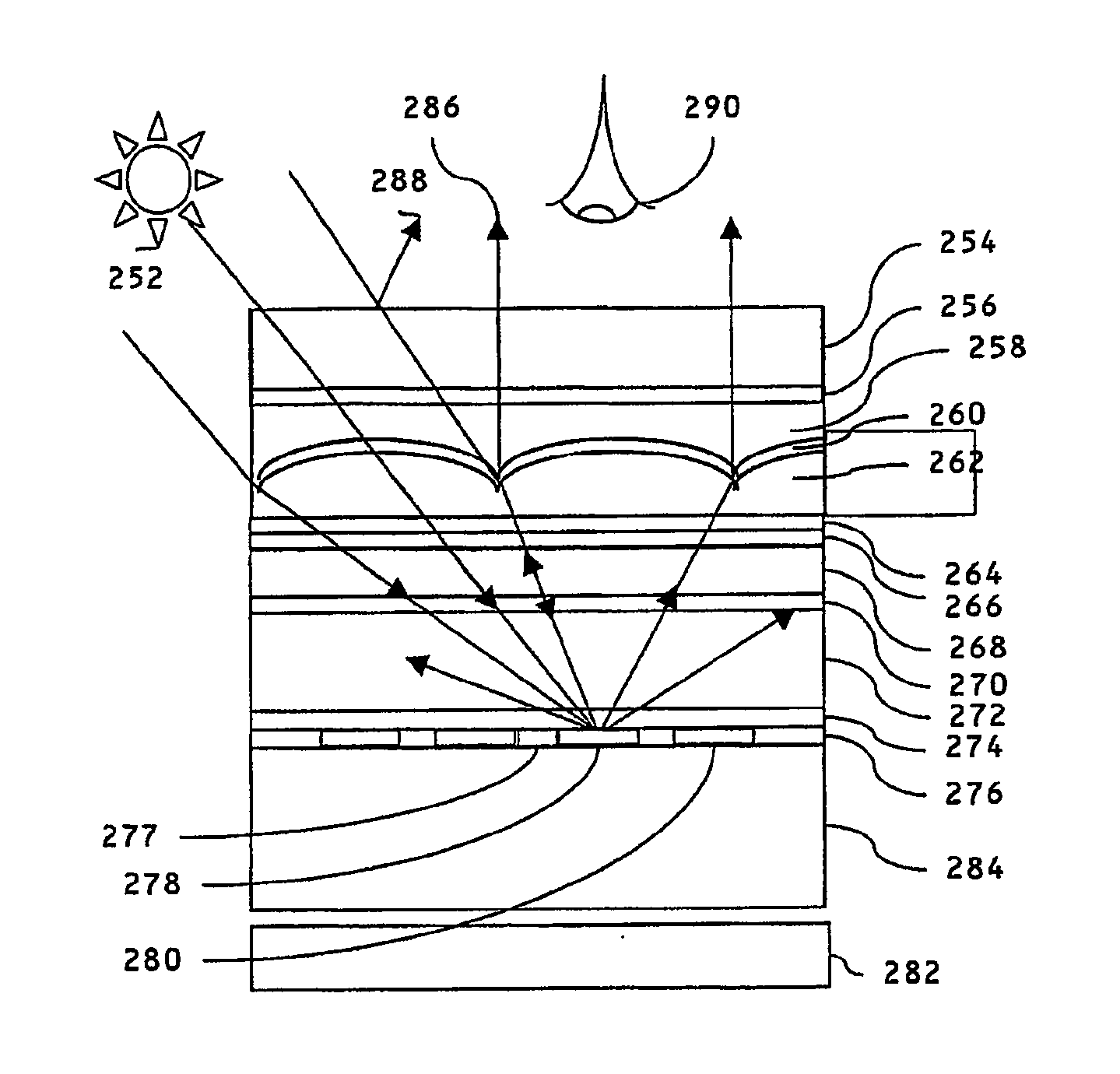Switchable Lens
a technology of active lenses and switches, which is applied in the direction of instruments, color television details, electrical devices, etc., can solve the problems of reduced viewing freedom of observers, user visual strain, and artefacts, and achieve low image crosstalk levels, high brightness, and high quality
- Summary
- Abstract
- Description
- Claims
- Application Information
AI Technical Summary
Benefits of technology
Problems solved by technology
Method used
Image
Examples
Embodiment Construction
[0182]Some of the various embodiments employ common elements which, for brevity, will be given common reference numerals and a description thereof will not be repeated. Furthermore the description of the elements of each embodiment applies equally to the identical elements of the other embodiments and the elements having corresponding effects, mutatis mutandis. Also, the figures illustrating the embodiments which are displays show only a portion of display, for clarity. In fact, the construction is repeated over the entire area of the display.
[0183]In this specification, the direction of the optical axis of the birefringent material (the director direction, or the extraordinary axis direction) will be referred to as the birefringent optical axis. This should not be confused with the optical axis of the lenses which is defined in the usual way by geometric optics.
[0184]A cylindrical lens describes a lens in which an edge (which has a radius of curvature and may have other aspheric co...
PUM
| Property | Measurement | Unit |
|---|---|---|
| temperatures | aaaaa | aaaaa |
| temperatures | aaaaa | aaaaa |
| temperature | aaaaa | aaaaa |
Abstract
Description
Claims
Application Information
 Login to View More
Login to View More - R&D
- Intellectual Property
- Life Sciences
- Materials
- Tech Scout
- Unparalleled Data Quality
- Higher Quality Content
- 60% Fewer Hallucinations
Browse by: Latest US Patents, China's latest patents, Technical Efficacy Thesaurus, Application Domain, Technology Topic, Popular Technical Reports.
© 2025 PatSnap. All rights reserved.Legal|Privacy policy|Modern Slavery Act Transparency Statement|Sitemap|About US| Contact US: help@patsnap.com



